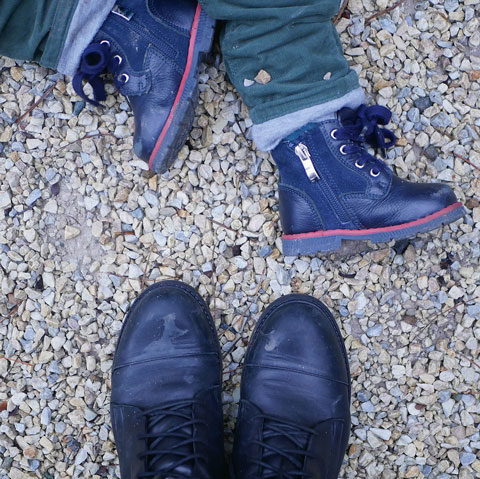When teachers are called on to work with children and families remotely, project work can be a welcome addition to the teacher’s toolbox for a variety of reasons. It is engaging, motivating, flexible, and, if the right topic is selected, families already have all the materials they will need at their fingertips!
For example, the teacher might start a project investigation about things most people have in their homes, such as shoes, water, hats, blankets, or things to sit on. Insects, birds, plants, trees, doors, windows, gardening, or rocks also might be useful project topics—all with materials located right outside the family’s home.
The teacher can provide suggested activities to family members who are going to help the child with the investigation. For example, in a project on shoes, she could ask children to investigate sizes, colors, closures (e.g., laces, Velcro, slip-ons), and materials that shoes are made from.
They could collect data by counting, measuring, and drawing shoes or even doing rubbings of the soles (by turning the shoe upside down, laying a piece of paper on the sole, and rubbing a crayon over it to re-create the sole’s pattern).
With a little assistance, they could survey extended family members through e-mail or phone calls. For example, they might ask their grandparents if they have ever had their shoes repaired, or they might ask their aunts what color shoes they have in their closets. Or they could gather data for a graph that shows how many people in their family wear particular shoe sizes.
Children could make up and illustrate nonfiction and fiction stories about shoes to share with their classmates. Teachers can take advantage of these kinds of rich, long-term investigations to integrate math, language arts, science, social studies, and arts lessons.

Sallee Beneke
Sallee (BenekeSalleeJ@sau.edu) is Professor and Director of Graduate Programs in ECE at St Ambrose University, Iowa. She coauthored The Project Approach for All Learners (2019) with Michaelene Ostrosky and Lilian Katz. Sallee used the Project Approach as a teacher and has worked to build the implementation of the approach via training and consulting. Sallee co-founded the IEL Project Approach Web site, and Facebook page with Lilian Katz, and she continues to contribute to the site.
Biography current as of 2021


